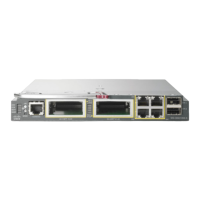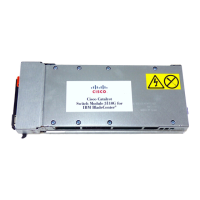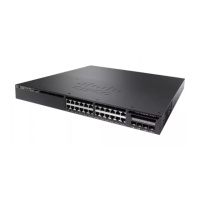Contents
xxviii
Cisco Catalyst Blade Switch 3120 for HP Software Configuration Guide
OL-12247-01
Configuring Classification Using Port Trust States 36-35
Configuring the Trust State on Ports within the QoS Domain 36-35
Configuring the CoS Value for an Interface 36-37
Configuring a Trusted Boundary to Ensure Port Security 36-38
Enabling DSCP Transparency Mode 36-39
Configuring the DSCP Trust State on a Port Bordering Another QoS Domain 36-40
Configuring a QoS Policy 36-42
Classifying Traffic by Using ACLs 36-43
Classifying Traffic by Using Class Maps 36-46
Classifying, Policing, and Marking Traffic on Physical Ports by Using Policy Maps 36-48
Classifying, Policing, and Marking Traffic on SVIs by Using Hierarchical Policy Maps 36-52
Classifying, Policing, and Marking Traffic by Using Aggregate Policers 36-58
Configuring DSCP Maps 36-60
Configuring the CoS-to-DSCP Map 36-60
Configuring the IP-Precedence-to-DSCP Map 36-61
Configuring the Policed-DSCP Map 36-62
Configuring the DSCP-to-CoS Map 36-63
Configuring the DSCP-to-DSCP-Mutation Map 36-64
Configuring Ingress Queue Characteristics 36-66
Mapping DSCP or CoS Values to an Ingress Queue and Setting WTD Thresholds 36-67
Allocating Buffer Space Between the Ingress Queues 36-68
Allocating Bandwidth Between the Ingress Queues 36-68
Configuring the Ingress Priority Queue 36-69
Configuring Egress Queue Characteristics 36-70
Configuration Guidelines 36-71
Allocating Buffer Space to and Setting WTD Thresholds for an Egress Queue-Set 36-71
Mapping DSCP or CoS Values to an Egress Queue and to a Threshold ID 36-73
Configuring SRR Shaped Weights on Egress Queues 36-75
Configuring SRR Shared Weights on Egress Queues 36-76
Configuring the Egress Expedite Queue 36-76
Limiting the Bandwidth on an Egress Interface 36-77
Displaying Standard QoS Information 36-78
CHAPTER
37 Configuring EtherChannels and Link-State Tracking 37-1
Understanding EtherChannels 37-1
EtherChannel Overview 37-2
Port-Channel Interfaces 37-4

